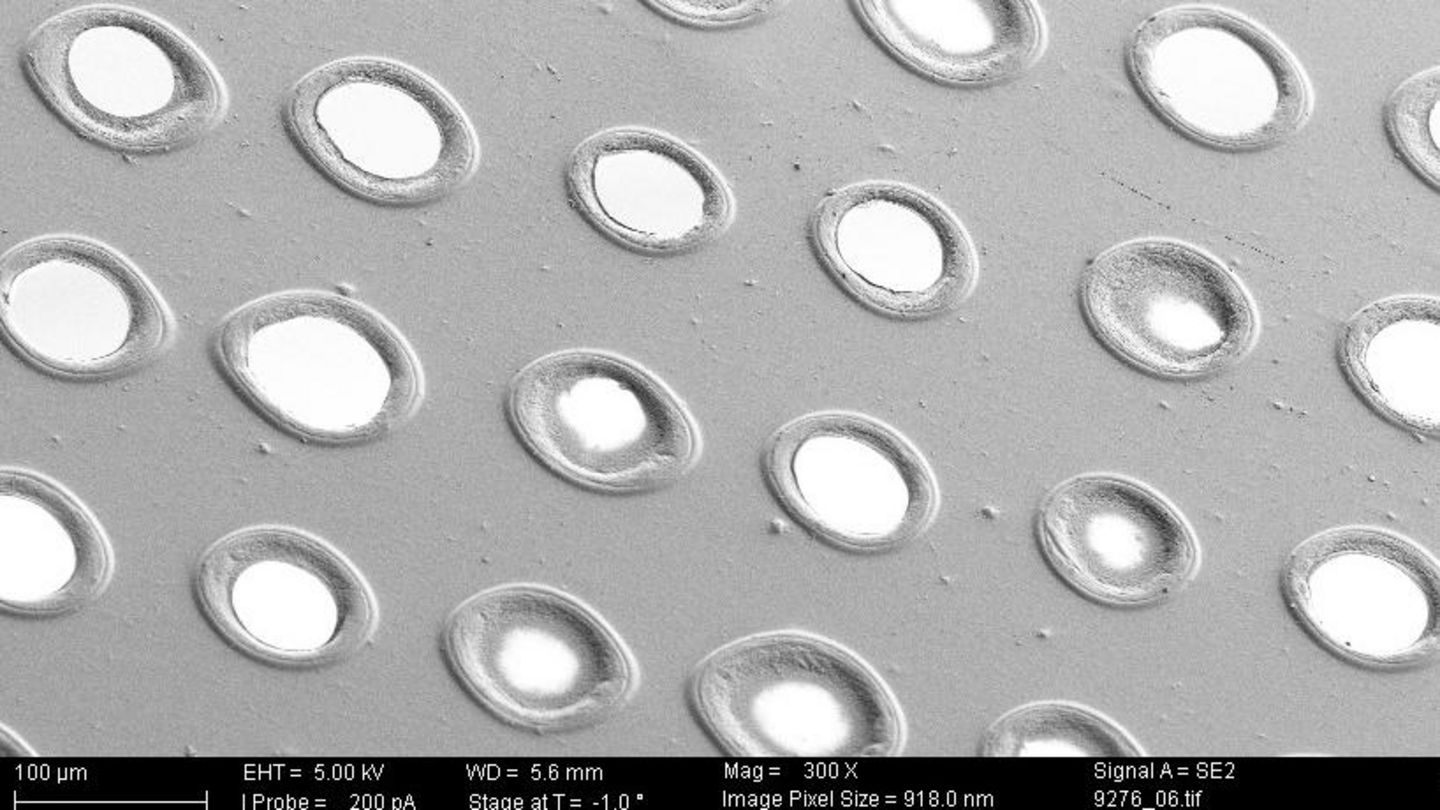Li batteries with better performance and reliability // TRUMPF presents new application for precise perforation of separator foils with VCSEL heating systems // L-Europe patented process and system for perforating battery separator foils using TRUMPF VCSEL heating system as key component // High accuracy of direct heat treatment with VCSEL heating systems enable new application fields in e-mobility
Ulm, June 28, 2022 – TRUMPF Photonic Components, a global leader in VCSEL solutions, presents a new application field for its VCSEL heating systems in the manufacturing process of Li batteries for e-mobility. Li batteries benefit from an increase in safety, performance, and reliability. This is reached by the high accuracy of the VCSEL heating systems to perforate separator foils. Separator foils are key components within Li batteries. The permeable membrane is placed between the anode and cathode to prevent electrical short circuits and to allow the smooth transport of ionic charge carriers. With VCSEL heating systems, even very thin separator foils can be processed quickly and homogeneously. As a result, battery safety is increased because the process enables a good battery shutdown function when overheating. “Compared to other production methods, the VCSEL heating systems can be an enabler to reduce overall manufacturing costs and to improve battery charging times at the same time”, says Ralph Gudde, VP Marketing and Sales at TRUMPF Photonic Components. “We see high potential for our unique VCSEL heat treatment in various battery manufacturing steps, not only in precisely perforating separator foils and enabling higher hole density levels, but also, for example, in the drying of battery foils or in pouch cell sealing” Gudde adds. The robust and compact laser modules can be integrated easily into industrial production processes.
How L-Europe successfully qualified its new perforation process
The Swiss company L-Europe is the first company that developed and patented a complete process and system for perforating battery separator foils, using TRUMPF VCSEL heating systems as key elements within their system. The optical power of the VCSEL heating systems can be regulated precisely. Using infrared radiation, printed micro patterns on the electrode foil are heated and, in so doing, the separator foil is perforated. While the infrared laser of the VCSEL system is absorbed only on the printed patterns, micro holes are created through the substrate. “There are great process results with the VCSEL heating systems from TRUMPF. We have achieved a hole density of 5,000 holes per square centimeter with a hole diameter of 3 to 22 μm, that’s impressive,” says Thomas Kreimer, CTO at L-Europe. “Having TRUMPF as a supplier of the key element of our systems supports our promise in offering highly reliable systems for the battery process chain,” Kreimer adds. VCSEL heating systems are well suited to treat the heat resistant separator foils.
Visit TRUMPF at the Battery Show Europe, Hall 10, Booth A10
Digital photographs in print-ready resolution are available to illustrate this press release. They may only be used for editorial purposes. Use is free of charge when credit is given as “Photo: TRUMPF”. Graphic editing – except for cropping the main subject – is prohibited. Additional photos can be accessed at TRUMPF Media Pool

Processed separator foils with VCSEL heating systems
VCSEL heating systems are used to irradiate a printed micro pattern on electrode foil. The IR laser is absorbed only on the printed pattern and creates micro holes with a diameter of 3 – 22 μm through the substrate.












